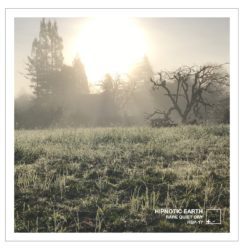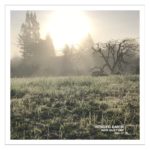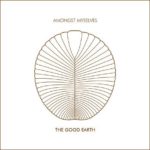HLER – LGM-1
HLER combines the initials of this duo: Heikki Lindgren and Esa Ruoho. They file their music under ‘improvised noise, clicks, hums, drone, a captured submarine humming in the hangar of a space station, “Are you sure you guys are alright and that the cables work?”‘ (that last quote is theirs, not mine).
It’s not mentioned what instruments were used for LGM-1, but according to their own bio most of the sounds originate from a second-hand Peruvian Mochika XL synthesizer which proved to be a unique source for live performances, because “it was almost impossible to recreate the exact same sound twice.”
But perhaps for this album, another kind of basic material was used…we can’t be sure since details about this are not given…
LGM-1 is inspired by a strange phenomenon coming from outer space: so-called fast radio bursts, bursts of energy that shine for only a few milliseconds but release about a million times more energy than the sun. They were discovered in 2007, but until now no-one knows what they are.
“(They do not come from just anywhere in space. They are from outside our galaxy, maybe as far as billions of light years away, according to initial measurements of a phenomenon called the “dispersion effect”. Radio bursts could be a sign of strange and new physics.”
From the beginning of the album, the outer-space-drones are quite overwhelming, conveying the pure energy of the PSR’s (Pulse Sound Recordings, I guess). The massive sounds works best if played loud! It’s a sound to indulge in, since it seems to contain fragment of hidden secrets from outer space. Secrets that are impossible to grasp. Yet.
LGM-1 is released on ZeroK: a sublabel of the Unexplained Sounds Group, “focused on deep and cinematic experimental ambient, along with a nod to scientific exploration and experimentation, as well as moods and feelings evoked by sci-fi imagery.”
The physical editions (cassette or CDr) are now sold out. But the good news is that with the digital downloads you get no less than 110 minutes of stunning space drones, more than could be fitted on CDr or cassette.
HIPNOTIC EARTH – RARE QUIET DAY 
In these weird times of the Corona lockdown, quiet days suddenly aren’t so rare anymore. Streets are empty, all is quiet, sometimes even in the city the sounds of nature can be heard more than ever.
But Rare Quiet Day was released in february this year, when the unusual silence had not taken over yet.
The album is inspired by “those moments and hours when there are no power tools or construction in the sound field, or when you are hunkered in from the weather and no one is asking you for your time or attention thus allowing one to sink into and follow one’s own true flow; sourced from a certain flavor of stillness which helps one to hear the shhhhhhhhhhhhhhh that wishes to arise from the cacophony of daily life.”
Hipnotic Earth is the solo project of Cosmos Rennert, born from the need to create quiet, slow motion music. The sounds are created “without premeditation”, improvised, but presented only after “a great deal of sculpting and shaping.”
The short (27-minute) album with classic ambient soundscapes is not only calming for Cosmos himself but may also help the listener to find a moment of quiet.
Especially now, while the streets may be silent but the world is in turmoil.
AMONGST MYSELVES – THE GOOD EARTH 
From the south of Australia comes Steve Roberts, aka Amongst Myselves. He has released several albums since 1999, heavily inspired by the music he listened to in his young age: early electronic groups like Tangerine Dream, Schulze, Synergy, etcetera – gradually finding his own sound which still owes a lot to these original artists but is not just simply reproducing it.
The Good Earth, his latest album, intends to “take you on a wander through the history of an Australian landscape and its inhabitants. From the first signs of life to humans looking towards their future in the stars.”
Spending more time building his own electronic music instruments helped Roberts to create music based on improvised sessions, without the restrictions of software-based synths. Of course, home-built synths create different kinds of restrictions: “too many options equals too many distractions.”
The Good Earth is quite a luxurious for a self-released album: the CD-version also contains a separate Blu-Ray disc with a 20-minute timelapse video based on the track “On the Margins”.
“This explores the presence of former inhabitants of abandoned buildings who took the land to its limit and the seemingly unchanging heavens that overlook them.”
Time-lapse videos are often made outside: landscapes, clouds, skies, and light. On The Margins presents a lot of beautiful coloured (and deserted) Australian landscapes. But I was especially impressed with the in-house timelapse image recordings. The combination of slow-moving curtains in obviously deserted houses, eerie light coming from outside, with the score of layered synth pads is quite suspenseful and definitely adds an extra layer of joy to the music.
The Blue-Ray is a bonus with the physical CD; the digital download does not contain the video.






